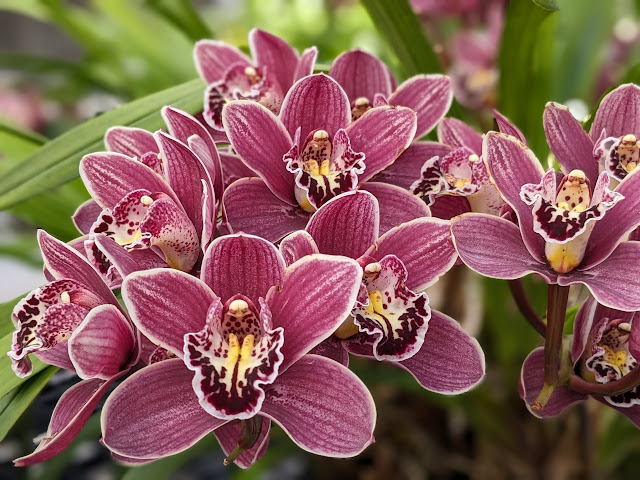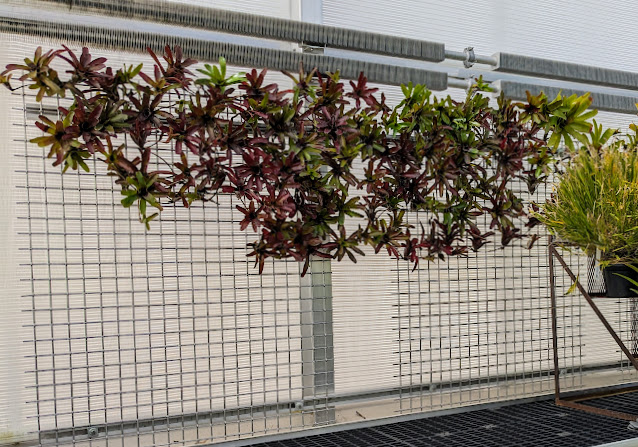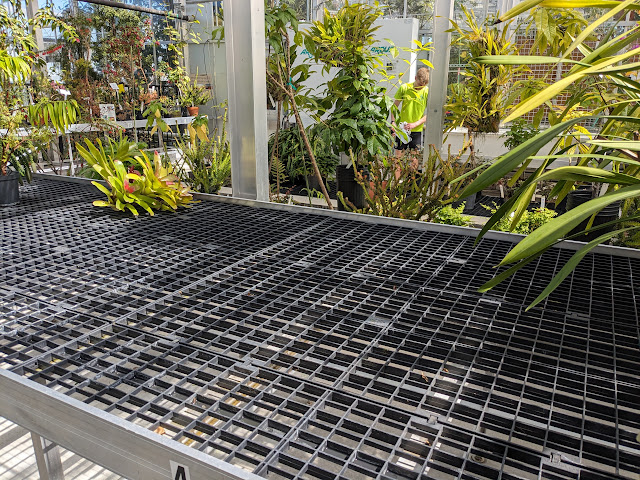I often feel guilty after my trips to the CBS (College of Biological Sciences) Conservatory at the University of Minnesota. They are supposed to be earnest volunteering events. But really, it feels like recess or playtime. The best part is that there is almost no stress: there are world class experts to consult if I have a questions, and the best part is I have no deadlines, peer reviews, compliance courses, diagnosis or billing codes to muddy the experience. I feel a bit sheepish for getting so much joy with almost none of the responsibility other than arriving on-time at 10:00 a.m. - a very civilized hour of the morning.
Today I learned so much. My task today was hanging bromeliad plants. This is a project I started last week but couldn't complete due to lack of time and materials. On the way, I passed these two interesting orchid plants. They were just sitting at my elbow as I worked to hang the bromeliads.
 |
| Cymbidium orchid |
 |
| A tiny orchid meant to look like a lady bee, to attract a male pollinator |
 |
| Bromeliads newly hung up on a metal trellises |
Last week I hung the larger green variety of the Neoregelia hybrid bromeliads. This week I worked to get the smaller, dark red bromeliads up onto the trellises. Zip ties were used to fix the woody stems to the trellis. I tried to angle the cups of the plants upward to hold water. They get sprayed daily with a weak solution of fertilizer.
 |
| Newly freed-up space for other plants in the collection |
By hanging the bromeliads on a trellises, rather than allowing them to spread on a horizontal bench surface, at least 50 square feet of precious greenhouse bench space has been freed. This allows space for expansion of other plants in the collection.
Finally, I know it is tacky to mention specific software apps, but I only mention it because it is new to me. The staff of the CBS use the app called Slack to communicate amongst themselves with issues related to the CBS conservatory maintenance. Today I was invited to join the Slack group in order to be up to speed with changes and ongoing issues in the Conservatory. The Slack app is new to me. It is a shared communication board for everyone to read, like an electronic whiteboard. It is an efficient way for the staff to communicate with everyone at the same time, better than having to send messages separately to everyone's text and email inboxes - and having to keep those lists up to date.




Comments
Post a Comment